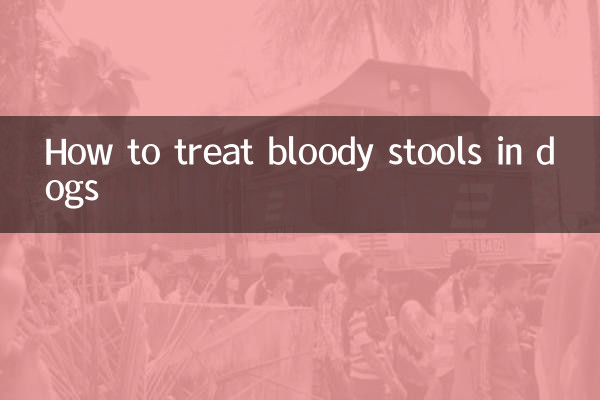How to treat bloody stools in dogs: Comprehensive analysis and solutions
Recently, the topic of pet health has continued to heat up on social media, especially the issue of dogs with blood in their stools, which has triggered widespread discussion. Many pet owners are anxiously asking about treatment methods. This article will provide you with structured solutions based on the hot discussions on the Internet in the past 10 days.
1. Analysis of common causes of blood in dog stools

| Cause classification | Specific performance | Proportion (recent cases) |
|---|---|---|
| parasitic infection | Blood in the stool and weight loss | 32% |
| Improper diet | Sudden bloody stools and vomiting | 25% |
| digestive tract diseases | Persistent blood in the stool and loss of appetite | 18% |
| Accidental ingestion of foreign bodies | acute bleeding, abdominal pain | 15% |
| viral infection | Accompanied by fever and listlessness | 10% |
2. Emergency steps (golden 24 hours)
1.Observation record: Take photos of blood in your stool and record the amount, color (bright red/dark red), and frequency of bleeding
2.fasting treatment: Stop feeding for 12-24 hours and maintain drinking water supply
3.Body temperature monitoring: The normal range is 38-39℃. If it exceeds 39.5℃, you need to seek medical attention immediately.
4.temporary medication: Montmorillonite powder can be used under the guidance of a veterinarian (Dosage: 1/3 pack/time for small dogs)
3. Comparison of treatment options (recent hot discussion)
| Treatment | Applicable situations | Effective time | Things to note |
|---|---|---|---|
| anthelmintic treatment | parasite positive | 3-5 days | Requires continuous medication for 2-3 cycles |
| antibiotic treatment | bacterial infection | 2-3 days | Need to complete the entire course of treatment |
| surgical treatment | foreign body obstruction | immediately | Strict care is required after surgery |
| Dietary conditioning | mild gastroenteritis | 5-7 days | Choose hypoallergenic prescription foods |
4. Preventive measures (summary of expert advice in the past 10 days)
1.Regular deworming: Once a month for puppies, once every 3 months for adult dogs
2.Diet management: Avoid feeding high-risk foods such as bones and raw meat
3.Clean environment: Disinfect food bowls every week to avoid bacterial growth
4.Physical examination plan: It is recommended to conduct a comprehensive physical examination once a year and once every six months for elderly dogs.
5. Hot Q&A (from recent pet forum discussions)
| High frequency problem | Professional answers |
|---|---|
| Can I give probiotics after having blood in the stool? | The cause of the disease needs to be clarified first, and it should be used with caution in case of bacterial infection. |
| Do home hemostatic medications work? | Only suitable for superficial bleeding, use Yunnan Baiyao with caution |
| What color of bloody stool is most dangerous? | Black tarry appearance indicates stomach bleeding |
| What should I do if I have blood in my stool during vaccination? | Stop vaccination immediately and seek medical advice |
6. Special reminder
According to recent emergency data from multiple pet hospitals, summer is a period of high incidence of blood in dog stools, which is mainly related to food deterioration and active parasites. If you find the followingred flagImmediate medical attention is needed:
- Blood in the stool more than 3 times in a single day
- accompanied by vomiting or convulsions
- Pale gums (a sign of anemia)
- Obvious abnormality in mental state
Finally, I would like to remind all pet owners that the online information is for reference only. Please refer to the veterinarian’s diagnosis for specific treatment. Many of the recent "home remedies" hot posts are misleading, so be sure to choose a regular pet hospital for treatment.

check the details

check the details